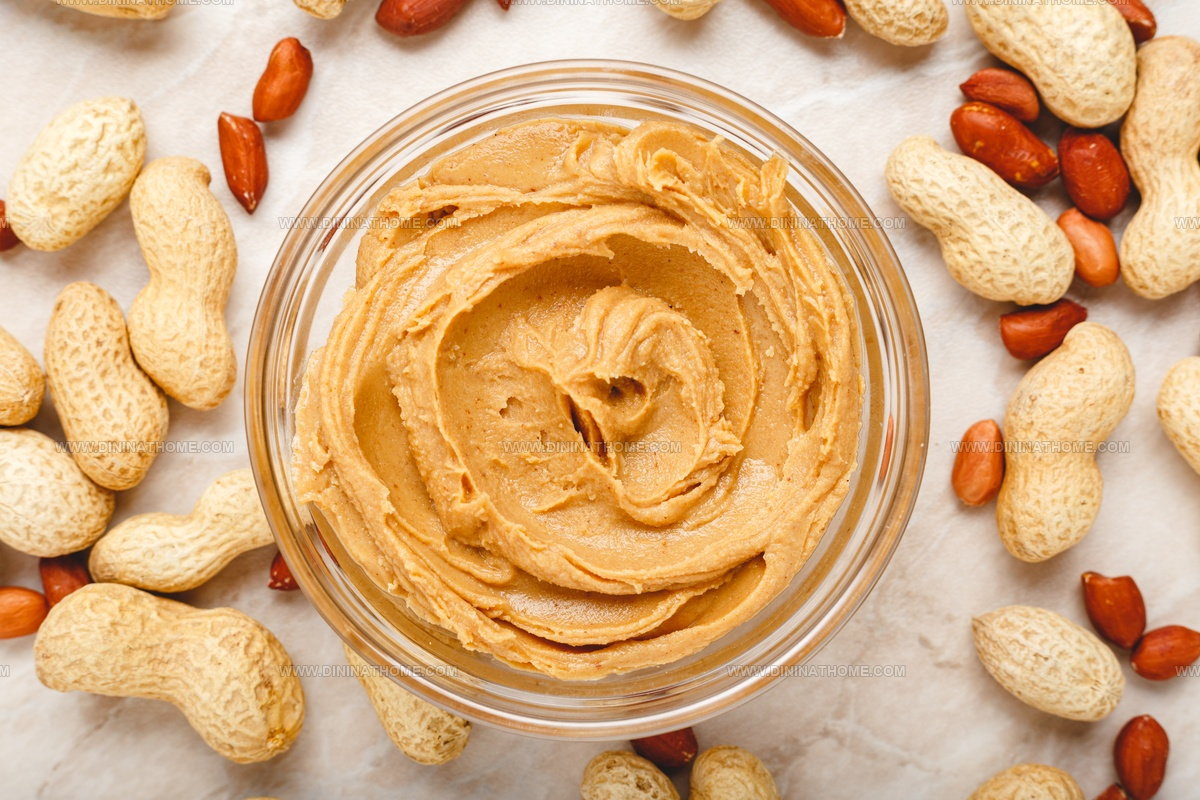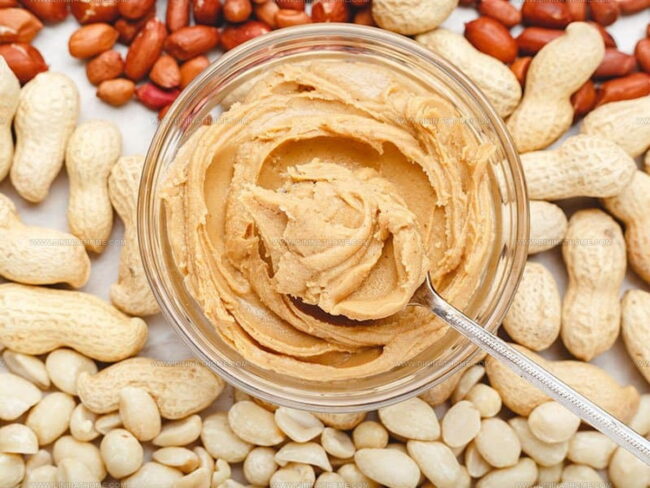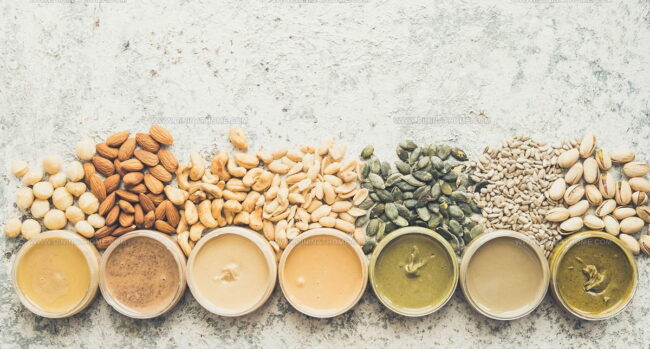3 Baking Without Peanut Butter Using These Swaps
Substitute for peanut butter in baking can completely transform traditional recipes while maintaining delicious results.
Allergies or simply running out of this popular spread at crucial moments can challenge bakers.
Alternative options range from other nut butters to seed-based spreads that deliver similar textures and complementary flavors.
The best replacements often preserve moisture content and binding properties so important in cookies, brownies, and cakes.
Creative swaps might even enhance original recipes with subtle flavor variations that family members actually prefer.
Most alternatives work seamlessly in nearly identical measurements as the original ingredient, making substitution stress-free.
Ready to revolutionize those favorite baked goods with exciting new flavor profiles? The next sections reveal exactly which substitutes work best for different types of baked treats.
Why Substitute Peanut Butter in Baking?
There are many reasons you might want to use something other than peanut butter in your baking, whether for health, flavor, or just a change of pace:
Rich Peanut Butter Alternatives for Baking
Peanut butter missing from your baking plans can be a quick fix. A substitute with the right consistency blends in perfectly, letting you keep the whisking and folding going. Those cookies or bars will still be worth every bite.
Almond Butter
Almond butter stands as an excellent peanut butter substitute for your baking needs, made from roasted almonds that may or may not include skins depending on the brand's preference for texture.
The nutritional profile matches peanut butter closely, allowing for a 1:1 replacement in recipes, though it might slightly alter the results in baked goods.
Almond butter contains higher levels of beneficial mono- and polyunsaturated fatty acids compared to its peanut counterpart.
Research indicates this substitute is rich in fiber, helping you feel satisfied longer after eating.
Cashew Butter
Cashew butter serves as a popular peanut butter substitute, maintaining creamy smoothness due to its high-fat content when processed into butter form.
Many dessert recipes like brownies and cheesecakes benefit from this alternative, which has gained significant shelf space in supermarkets nationwide.
The main differences come from cashew butter's lower protein content and more buttery flavor profile compared to peanut butter.
For those with nut allergies, neither option works safely as both contain tree nuts that trigger reactions.
Most recipes allow for a simple 1:1 substitution ratio when swapping peanut butter for cashew butter in your favorite dishes.
Tahini
Tahini, a Middle Eastern condiment made from mashed sesame seeds and olive oil, offers a nutritious alternative to peanut butter with higher calcium content.
Many people recognize it as a key ingredient in hummus but don't realize its versatility as a substitute in various dishes despite its long history.
The subtle flavor profile of tahini differs from peanut butter's strong, dominant taste and lacks that touch of sweetness, which can be important when substituting in certain baking recipes.
This sesame paste works wonderfully in savory applications and can add unexpected depth to dressings, sauces, and marinades.
Adjusting Sweetness and Texture When Swapping Peanut Butter
When you swap out peanut butter in baking, it’s easy to get the right sweetness and texture if you pay attention to a few simple details and make small adjustments as needed:
Taste Your Substitute
Nut and seed butters have unique flavors and sweetness levels, taste your alternative first to see if it’s milder, earthier, or sweeter than peanut butter.
Adjust Sugar
If your substitute is less sweet, add more sugar or honey; if it’s sweeter, reduce other sweeteners in your recipe.
Watch Salt Levels
Some substitutes are saltier or unsalted, taste your dough and adjust salt as needed, reducing it if your spread is already salty.
Check Consistency
Natural nut or seed butters are often runnier; stir well before measuring, and if the batter is too thin, add a spoonful of flour or oats to thicken.
Creaminess Matters
For recipes needing creamy peanut butter, use a smooth substitute; crunchy spreads change texture, which can be fun in cookies but not for every treat.
Blend Well
Mix your substitute in evenly so every bite has the right taste and texture, use a spatula to blend thicker spreads.
Bake Time
Substitutes may brown or set differently than peanut butter, so check your baked goods a few minutes early the first time you try a swap.
Your Peanut Butter Substitute Questions, Answered
1. Are there allergy-friendly alternatives to peanut butter?
Yes, sunflower seed butter and soy nut butter are popular nut-free options for those with peanut or tree nut allergies.
2. Can I use butter or margarine instead of peanut butter in baking?
Butter or margarine can add fat and moisture, but will not provide the nutty flavor or binding qualities of peanut butter.
3. What’s the best substitute for peanut butter in sandwiches?
Sunflower seed butter or soy nut butter are great for nut-free sandwiches, while almond and cashew butters offer a classic, creamy alternative.
4. Are there low-sugar or unsweetened peanut butter substitutes?
Yes, many brands offer unsweetened and low-sugar versions of all seed and nut butters, check labels to suit your needs.
5. Will a substitute work in both sweet and savory dishes?
Absolutely, use the same amount of the chosen substitute in cookies, sauces, dressings, and spreads.
6. Can I use tahini instead of peanut butter?
Tahini works well in sauces and dressings and provides a unique sesame flavor, but it is thinner and less sweet than peanut butter.
7. How should I store peanut butter substitutes?
Keep them in a sealed container in the refrigerator for best freshness, especially for natural or unsweetened versions.
8. Are peanut butter substitutes suitable for vegan diets?
Most seed and nut butters are vegan, but always check labels for honey or dairy additives.




Emily Harper
Nutrition Consultant & Recipe Analyst
Expertise
Healthy Recipe Modification, Nutritional Analysis & Meal Planning, Global Cuisine & Dietary Adaptations
Education
School: French Pastry School, Chicago, IL
Program: L’Art de la Pâtisserie
Focus: Intensive training in traditional French pastry techniques, baking theory, and confectionery arts.
Emily’s journey started in a pastry kitchen but took a detour into the world of health and flavor science.
Graduating from the French Pastry School and studying nutrition opened her eyes to a new mission: making healthy food taste like something you’d actually crave.
At Dining At Home, Emily’s the go-to for smart, feel-good recipes that don’t trade flavor for nutrition.
She’s all about adding a fresh spin on old favorites and finding small ways to make everyday meals a little brighter.
Outside of the kitchen, Emily is most at home walking forest trails, testing plant-based recipes, or sharing a picnic under a wide-open sky.